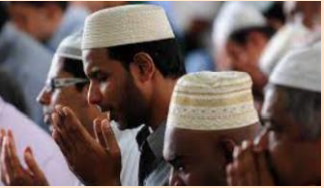The History of Sri Lanka’s Muslim Communities By Randika Jayakody and Jerome Perera
Source:Brisbane 4EB Sri Lankan Newsletter – Dæhæna – January 2022
When discussing multiculturalism in Sri Lanka one encounters a unique conflation of religion and ethnicity in the term “Muslim”. Globally, the term “Muslim” specifies adherents of Islam, whereas in Sri Lanka it refers to an amalgamation of religion and ethnicity. Various groups whose ethnic, cultural, and linguistic customs distinctly
differ are often categorised as Muslims.
Communities that practice Islam in Sri Lanka have been present on the island for millennia, as evident in the presence of the ancient Al Abrar Mosque in Beruwala which was built in 920AD, regarded as the oldest mosque on the island. This confirms at least over a millennium of intercultural exchange between Sri Lankan and Islamic communities around the world.
 Many communities practicing Islam were free settlers in Ceylon. These communities include Moors who trace their ancestry back to the Middle East and Persia. The Bohora and Memon communities trace their ancestry to Gujarat in India. The Malay and Javan communities are descendants from various ethnic groups in modern day Indonesia and Malaysia, whereas the enigmatic Afghans of Sri Lanka trace their ancestry to Afghanistan and central Asia.
Many communities practicing Islam were free settlers in Ceylon. These communities include Moors who trace their ancestry back to the Middle East and Persia. The Bohora and Memon communities trace their ancestry to Gujarat in India. The Malay and Javan communities are descendants from various ethnic groups in modern day Indonesia and Malaysia, whereas the enigmatic Afghans of Sri Lanka trace their ancestry to Afghanistan and central Asia.
These communities suffused Sri Lanka with a wealth of cultural, linguistic, economic, and gastronomic contributions which are presently ubiquitous in Sri Lanka. Nasi Goreng (fried rice), dodol, sambols, sarongs, the Malay language and batik were introduced by Malay and Javan communities. Malay soldiers famed for their martial skills partook in many historical conflicts and were prized within the armies of various Kingdoms in Ceylon. The Malay community was also instrumental in forming the Ceylon fire brigade and police force.
The Moors introduced Middle Eastern delicacies such as falooda,muscat, saruwath, biryani, colourful Fez Hats, and the language of Moor Tamil which amalgamates Tamil and Arabic. The ancient spice trade networks for which Tambapanni was famed around the world were consolidated by Moorish Traders.
The Bohora community was integral to the initial textile trade networks between Sri Lanka and India, which was based in Pettah. Afghan Sri Lankans were famed for horse breeding and elephant conservation as well as building the railways and their staunch opposition to imperialism.
The accounts above are only a superficial outline of the vast contributions of communities and living cultures that practice Islam in Sri Lanka, and we encourage readers to seek out more information about these fascinating and distinct Sri Lankan communities. Information on various Islamic ethnic groups is accessible through the
documentary series “Lost and Forgotten” and the work of Aamina Muhsin available through Youtube.
 Randika Jayakody and Jerome Perera
Randika Jayakody and Jerome Perera
Among Randika and Jerome’s many interests is a
deep passion to understand Sri Lankan history and
culture. This has been facilitated through exposure to
multiculturalism through their travels and living
experiences in multiple countries.







